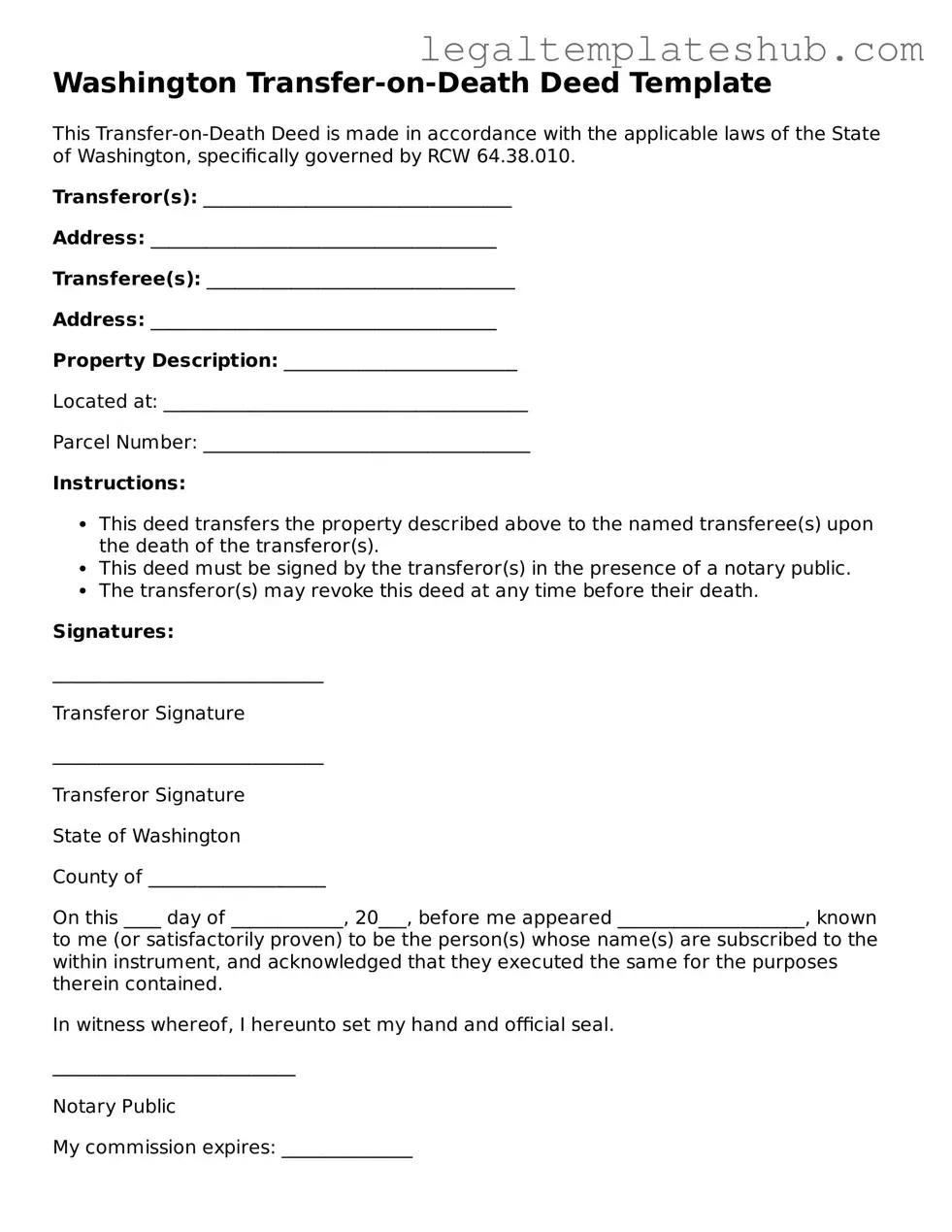Instructions on Filling in Washington Transfer-on-Death Deed
After obtaining the Washington Transfer-on-Death Deed form, it is important to complete it accurately to ensure proper transfer of property upon death. Follow the steps below to fill out the form correctly.
- Begin by entering the name of the property owner in the designated section. This should include the full legal name as it appears on the property title.
- Provide the address of the property. Ensure that the address is complete, including street number, street name, city, and zip code.
- Identify the legal description of the property. This can often be found on the current deed or property tax statement. It is important to be precise in this section.
- List the name(s) of the beneficiary or beneficiaries who will receive the property. Include full legal names, and if there are multiple beneficiaries, separate them with commas.
- Sign the form. The property owner must sign the deed in the presence of a notary public.
- Have the signature notarized. The notary will verify the identity of the signer and witness the signing of the document.
- Submit the completed deed to the county auditor’s office where the property is located. Ensure that it is filed according to local regulations.
After submitting the form, it is advisable to keep a copy for personal records. The deed will take effect upon the death of the property owner, transferring ownership to the designated beneficiary or beneficiaries without the need for probate.
